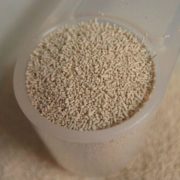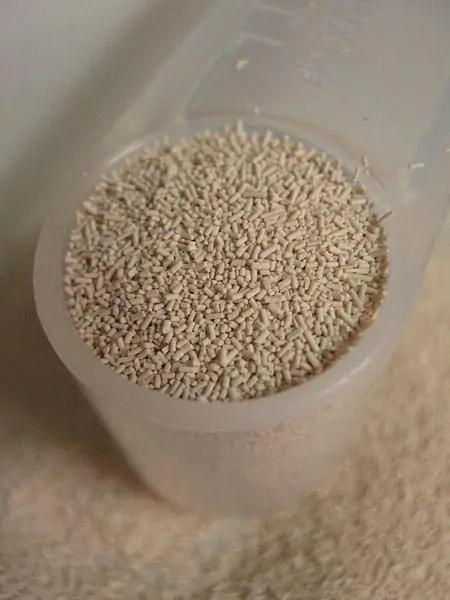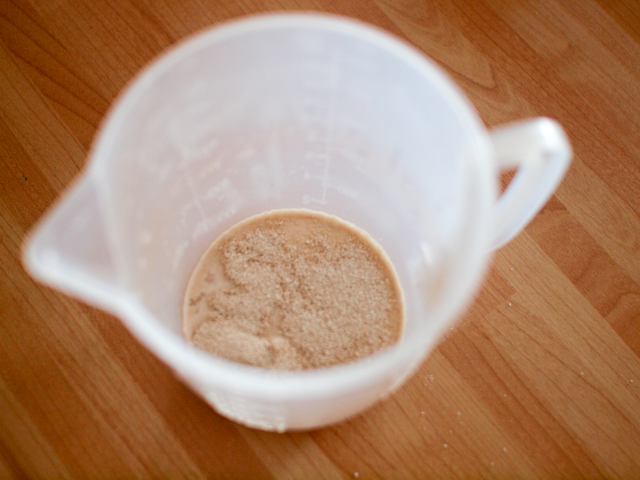What Is Yeast Nutrient? And How To Use It
If you have been brewing for any length of time you may have heard of yeast nutrient. It is a very common additive for plenty of wine recipes but is not often listed in many beer recipes.
Several yeast companies produce their own brand of yeast nutrient but what exactly is it and when should you use yeast nutrient. In this article, we are going to cover, what yeast nutrient is and why you would need it.
Table of Contents
Yeast Nutrients
Yeast health is one of the most important aspects of making good homebrew beer, wine or mead. After all, it is the sole reason for any alcohol being produced at all. Not only is yeast necessary for converting sugars to alcohol but it is also particularly important because it has a large influence on the flavour of the finished beverage.
Yeast creates many different compounds when fermenting a beer or wine that have a big effect on flavour. Wheat beer yeast for instance produce, clove, banana and bubblegum like flavours and this is desirable for the most part, if they are not healthy, however, they can produce undesirable flavours.
Unhealthy yeast can contribute undesirable flavours to your home brew. Flavours like apple flavours from acetaldehyde, harsh alcohol flavours or buttery flavours from diacetyl. These are all symptoms of poor yeast health or not enough yeast cells. This brings us to our main subject, yeast nutrition.
Yeast Nutrients Aid Health Of Yeast Cells
Yeast nutrients are added to beer or wine to ensure that the building blocks required by the yeast to form new cells and reproduce are available to them before and during fermentation.
When yeast reproduces they require things like amino acids, nitrogen, fatty acids and vitamins to form new cells. If these are not present when you add yeast to your wort or must it can lead to problems during fermentation or even starting fermentation, to begin with.
What Is In Yeast Nutrient?
Most blends of yeast nutrient contain a few different compounds, it is a good idea to check on the label to see what is added as some yeast nutrients may only provide things like nitrogen alone.
The most common compounds found in yeast nutrients are the following:
Diammonium Phosphate: This is a salt that provides a source of free amino nitrogen (FAN). This is the main ingredient in most yeast nutrient blends and is vital for yeast health. In most cases malt has a large amount of FAN so this nutrient is often not needed for beer making (more on that in a moment).
Yeast Hulls: Essentially this is dead yeast which acts as a source of lipids and fatty acids vital in providing resources for new yeast cell production.
Vitamins, Thiamin and Biotin: Yeast requires certain vitamins for cell growth and production just like our bodies do. Vitamins are added to nutrient blends to provide these important compounds. Biotin is a B-vitamin commonly used in making country wine production.
Magnesium, Zinc: These compounds are added to yeast nutrient to increase the cell count and magnesium aid yeast metabolism.
Do You Need To Use Yeast Nutrient?
It is almost always best to use yeast nutrient if the recipe has it listed in the ingredients and sometimes if it isn’t. There are some cases where it is not really necessary so let’s take a look at those.
Yeast Nutrient In Beer Making
For the most part beer has a lot of the nutrition yeast needs because wort for beer is produced with nutrient rich ingredients like malted barley. This means adding yeast nutrient is not really necessary
There may be certain instances when you are brewing particular beers that adding yeast nutrients will be beneficial. The time to think about using yeast nutrient would be in some of the following scenarios:
The Beer Is A Particularly High Gravity Beer: All yeast strains have a certain level of tolerance for alcohol depending on the type. The closer you get to this tolerance the harder time the yeast has. The addition of yeast nutrients in beers over or around 8% can ensure you aren’t going to run into problems with yeast stress and stalling.
The Beer Uses A High Portion of Adjuncts: If the beer uses a high portion of adjuncts, particularly if a large amount of the fermentables comes from plain sugar. Sugar alone has no real nutrients for the yeast so in cases where 25% or more of the fermentables come from adjuncts, yeast nutrients may be a good idea.
Unless you are brewing a beer that is like this then it is not really necessary to use a yeast nutrient for beer making. Most wort is highly nutrient rich and will contain everything needed to produce healthy yeast.
Nutrients for Yeast Starters
Yeast Nutrients For Wine Making Or Mead & Cider
Yeast nutrients become more vital for home wine makers and mead makers where the ingredients aren’t as nutrient dense as malted barley and wheat.
For country wines where more than 90% of the fermentable sugars come from simple sugars then the yeast need the addition of yeast nutrients to be able to reproduce and thrive. The same is true for making mead, honey is a simple sugar and will need a boost of nutrients for the yeast to ferment at their best.
In most instances, it would be recommended to use yeast nutrients in wine, mead and cider because there is no way for the home brewer to know how much nitrogen is available and what other micronutrients are in the ingredients they are using. There is no home test available to test these things. Whereas beer makers have malt specification so they can be certain of things like FAN.
How Much Yeast Nutrient To Use?
Dosages of yeast nutrients are almost always stated on the package they come in so always follow the advice and recommendations from the manufacturer.
This is usually added at the start of fermentation. Some more advanced wine makers space out additions of yeast nutrients into 2 or 3 additions, one before fermentation and then another addition once fermentation has started. I would say this isn’t necessary for a simple country wine but if you are making large amounts of grape wines this could be beneficial.






Nice article. What is the difference between LD Carlson Yeast Nutrient and Wyeast Nutrient? Thanks.
Hmm. I’m not sure on the exact formulation of each of these products but imagine using either one will not produce any noticeable difference. Most yeast nutrients contain the same basic compounds.